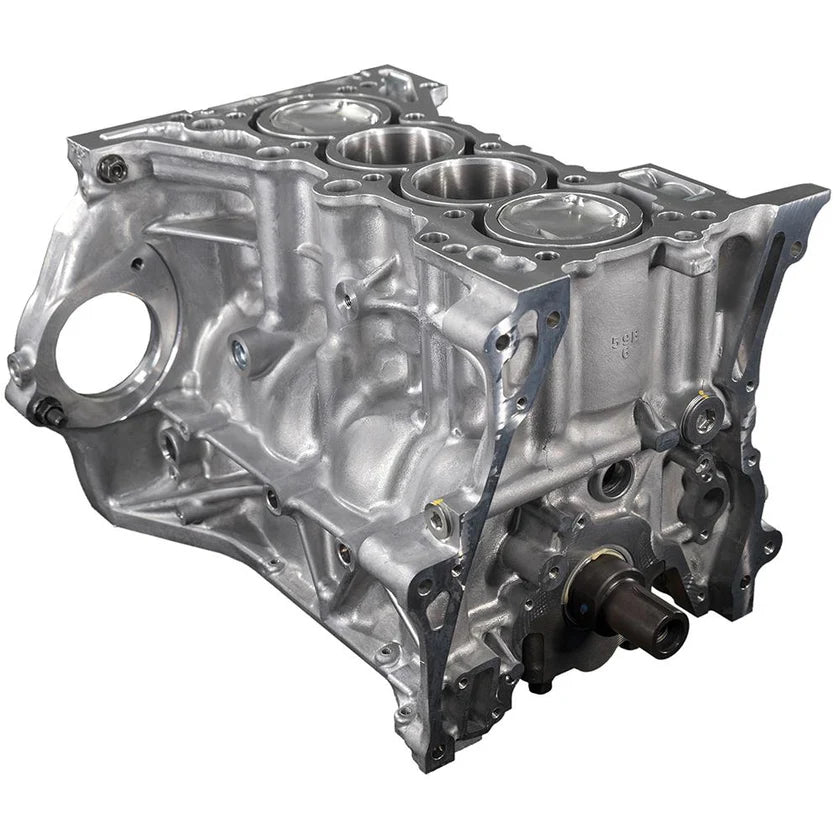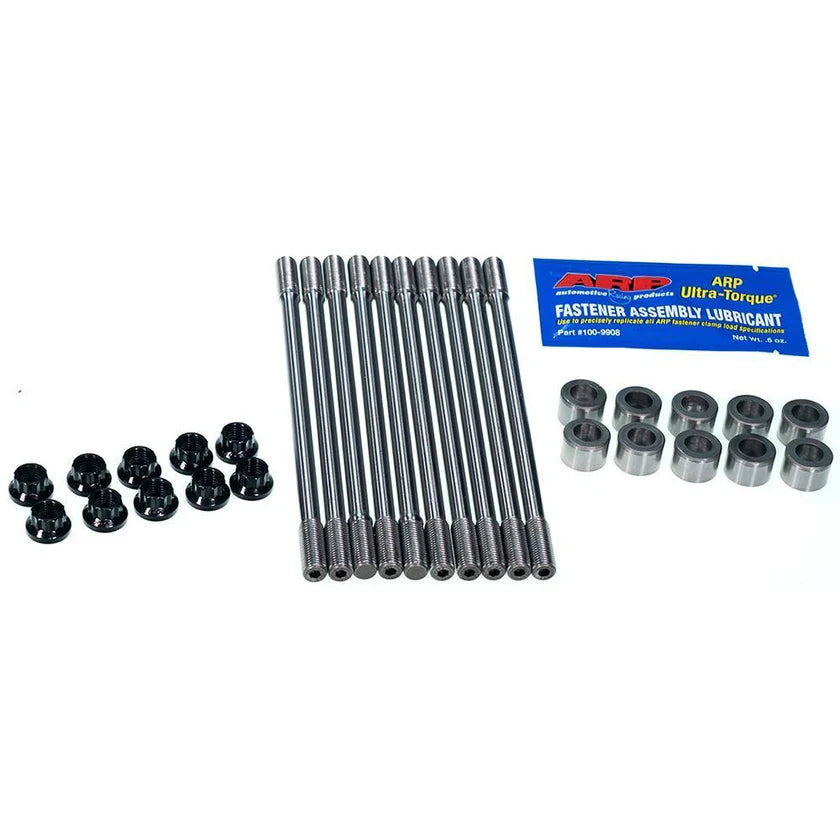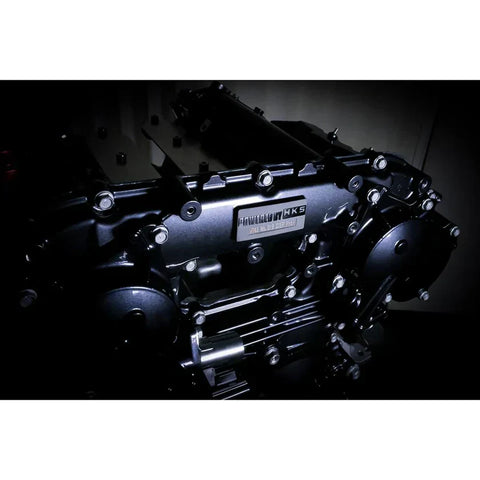Whether you're chasing horsepower, prepping for boost, or just want bulletproof reliability, upgrading your engine internals is a must. But here’s the thing—no two builds are alike. The right parts for a weekend warrior car won’t match what you need for a track-focused beast. That’s why planning your internal upgrades with precision is crucial.
Let’s walk through the key engine internals you’ll encounter in your build and break down what each one does, when to upgrade it, and how to choose the right components for your goals.
Shop All Engine Parts In Our Store

Engine Blocks: The Foundation of Your Build
At the heart of your engine lies the block itself—and that’s where you’ll need to start. Most Japanese import engines come with open deck blocks from the factory. This design favors cooling but sacrifices structural support, which becomes a problem under heavy boost or aggressive tuning.
By contrast, closed deck blocks add material around the cylinder sleeves to prevent movement under pressure. This reinforcement reduces cylinder wall distortion and dramatically increases durability at high horsepower levels.
Options for Reinforcing Open Deck Blocks:
-
Aftermarket Sleeving: Stronger sleeves are machined and pressed into place, converting the block to a closed-deck setup. This process increases both rigidity and longevity.
-
CSS (Cylinder Support System): A more cost-effective solution that uses press-fit reinforcements without fully sleeving the block. Ideal for street/strip builds needing extra reliability without the cost of a full race prep.
Note: Closed deck conversions can slightly restrict coolant flow, increasing operating temps. While rarely a dealbreaker, it’s worth planning around with an upgraded cooling system.

Forged Pistons: Strength Where It Counts
Pistons take a brutal beating under pressure—especially in turbocharged or high-compression setups. That’s where forged pistons come in. They’re stronger, more heat-resistant, and customizable to your exact needs.
Stage 1 Forged Pistons:
-
Full skirt for better stability
-
OEM-style oiling and gas ports
-
Ideal for moderate power builds (think 400–600 HP)
-
Available in various compression ratios to suit your boost and tuning setup
Stage 2 Forged Pistons:
-
Shortened skirt to reduce friction and increase engine efficiency
-
Larger wrist pin bosses and oil ports for better lubrication under load
-
Designed for high horsepower, high boost engines
-
Slight trade-off in piston stability, but well worth it for top-tier builds
Choosing between Stage 1 and Stage 2 pistons comes down to your power goals, how aggressive your tune is, and how the engine will be used daily or at the track.

Connecting Rods: I-Beam vs. H-Beam
Connecting rods are the backbone between your pistons and crank. Their design dramatically affects how much cylinder pressure your engine can handle—and for how long.
H-Beam Rods:
-
Lighter and more affordable
-
Great for NA builds or moderate boost
-
More prone to bending under extreme cylinder pressure
-
Often used in street builds or entry-level turbo setups
I-Beam Rods:
-
Heavier but stronger
-
Designed for high boost, high RPM applications
-
Less prone to flexing or distortion
-
The go-to choice for serious performance engines
Fitment note: H-beam rods can be bulkier in certain engines, requiring extra block clearancing. Always double-check tolerances if you’re switching rod styles.

Camshafts: Tuning Your Powerband
Your camshaft controls when and how your engine breathes. Upgrading your cams changes two critical specs:
-
Lift (how far the valves open)
-
Duration (how long the valves stay open)
Higher lift and longer duration typically bring more power—especially at high RPM. But they can make idle rough and reduce low-end torque if not tuned correctly.
Aftermarket cams are highly application-specific. There’s no universal answer here—you’ll need to consider:
-
Boost vs. NA
-
RPM range
-
Streetability vs. all-out track use
We carry a wide range of performance camshafts tailored to popular platforms like the Evo X, WRX, Civic Type R, and more.
Porting: Maximize Airflow, Maximize Power
Your camshaft is only as good as your porting job. The goal? Maximize the airflow your engine can ingest and evacuate—without creating turbulence or bottlenecks.
Types of Porting:
-
OEM Ports: Stock flow, unmodified
-
Cleaned-Up Porting: Minor smoothing and deburring
-
Full CNC & Hand-Ported: Custom shaping, port-matching to manifolds, and maximum flow potential
If you’re upgrading your cams, make sure your ports can keep up. And vice versa—don’t waste a high-flow head with a conservative cam.
Valve Springs & Valves: Supporting Cast, Critical Roles
Stronger cams and higher RPMs require stiffer valve springs to prevent valve float. Most aftermarket cams will specify the ideal spring rate to pair with them.
Likewise, consider upgrading your valves (especially in turbo or high-heat applications) to heat-resistant alloys like Inconel or stainless steel.

Head Studs: The Glue That Holds It All Together
This one’s non-negotiable if you're pushing power. Head studs provide stronger clamping force than OEM head bolts and help prevent head lift—a common issue in high-compression or high-boost builds.
Why Upgrade:
-
OEM bolts are torque-to-yield (one-time use)
-
ARP 2000 and similar head studs are reusable
-
Prevent blown head gaskets under heavy load
-
Essential when going from NA to turbo, or doubling factory horsepower
Find Your Car And Start Building Here!
Final Thoughts: Build with Intention
The takeaway? Every part of your engine build needs to align with your performance goals. There’s no one-size-fits-all answer—only smart, application-specific planning.
If you're unsure what to choose or how to pair your internals for the best results, our team at MAPerformance is here to help. We specialize in performance engines and can guide you through selecting the perfect parts for your platform—whether it's a JDM street car, boosted daily, or full race rig.
Ready to build smarter? Browse our engine internals collection or reach out to our sales team directly to get started - we're always happy to help you find the best parts for your engine.




Comments (0)
There are no comments for this article. Be the first one to leave a message!